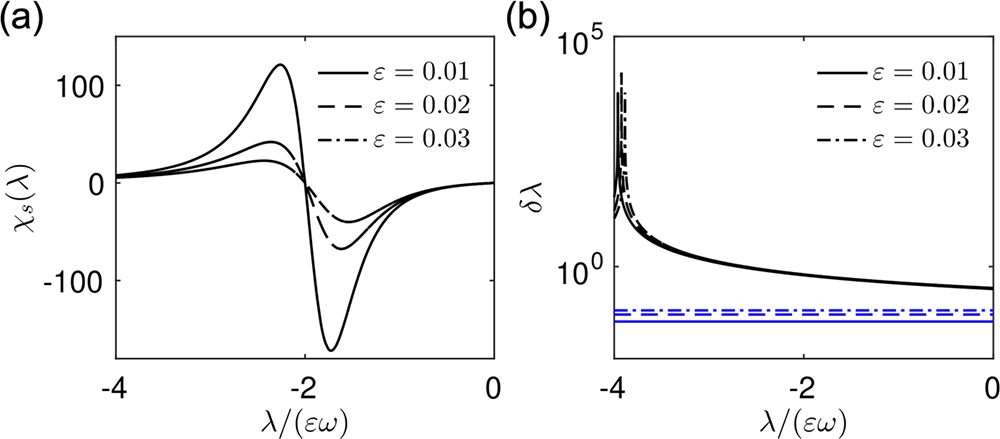Non-Hermitian systems can be used as an effective description of the short-term behavior of open quantum systems, and they are widely used to describe dissipative or non-reciprocal optical and acoustic systems. In recent years, non-Hermitian systems have received widespread attention from theoretical and experimental scientists, and have been realized in various experimental platforms such as optics, acoustics, cold atoms, ion traps, and circuits. The study of their related physical properties is still thriving. Compared to systems described by Hermitian Hamiltonians, non-Hermitian systems possess exceptional points, skin effect and other unique features. In particular, non-Hermitian exceptional points play a key role in many interesting phenomena or functional applications.
Quantum sensing refers to the use of quantum coherence or quantum correlations to achieve ultra-precise measurements of physical quantities. In recent years, with the vigorous development of non-Hermitian physics, several novel non-Hermitian physical characteristics have been proposed for precision measurement schemes. Among them, the most well-known is a research group proposing that the fractional-type dispersion relation of eigenenergy at exceptional points can achieve precision measurement of physical quantities. In subsequent experiments, the sensitivity of non-Hermitian systems to parameter changes near exceptional points was indeed observed. However, some scholars later pointed out that these precision measurement schemes based on non-Hermitian exceptional points did not take into account the influence of system noise. According to the standard definition in quantum metrology, the sensitivity of a sensor is determined by the signal-to-noise ratio. When considering the influence of noise at the exceptional point of non-Hermitian systems, the overall sensitivity may not be enhanced. Subsequently, several precision measurement schemes based on other physical characteristics of non-Hermitian systems have been proposed, and the influence of system noise has been studied. Some theoretical and experimental results indicate that even considering the influence of noise, non-Hermitian sensors still have a significant advantage in sensitivity compared to traditional Hermitian sensors. However, other theories and experiments suggest that when considering noise effects, the advantage of non-Hermitian sensors disappears. Therefore, whether non-Hermitian physics can truly enhance the measurement accuracy of sensors remains a controversial and urgent issue to be resolved.

Figure (a) shows that in pseud-Hermitian quantum sensors, the sensitivity of non-Hermitian systems to parameter changes significantly increases as they approach the exceptional point. However, Figure (b) indicates that after considering the influence of noise, the measurement accuracy of non-Hermitian sensors (black line) does not exceed the measurement accuracy of the corresponding Hermitian sensors (blue line).
Recently, Dr. Ding Wenkui (currently working at Zhejiang University of Technology) and Researcher Chen Shu from the Institute of Physics, Chinese Academy of Sciences / National Research Center for Condensed Matter Physics, along with Professor Wang Xiaoguang from Zhejiang University of Technology, studied the basic limit of sensitivity of non-Hermitian sensors. By utilizing non-Hermitian systems realized with expanded quantum systems, they determined the basic limit of sensitivity of non-Hermitian sensors from the perspective of quantum information. Under certain conditions, a subsystem of a quantum system can be regarded as a non-Hermitian system. Therefore, studying the sensitivity of non-Hermitian quantum sensors can be approached from the perspective of studying the quantum limits of the sensitivity of the sensors in the overall expanded quantum system. They proved that due to the invariance of quantum information about the measured parameters, non-Hermitian sensors do not outperform Hermitian sensors (directly coupled to the parameters) in sensitivity performance. By carefully studying two specific non-Hermitian sensing schemes implemented using fully quantum systems, they demonstrated that the sensitivity of these sensors aligns with their theoretical predictions. Their work establishes a connection between non-Hermitian physics and quantum metrology, providing a comprehensive theoretical framework for understanding the basic limits of non-Hermitian quantum sensors that is independent of specific models.

Figure (a) shows that in the non-Hermitian quantum system realized on the ion trap platform, the response energy will exhibit singularity with parameter changes at the exceptional point, corresponding to the divergence of the derivative in Figure (c). Figure (b) shows that the uncertainty of the measurement of the response energy also exhibits divergence. Since both signal and noise exhibit divergence, Figure (d) indicates that the sensitivity defined by standard definitions does not diverge at the exceptional point and does not exceed the sensitivity limit of the corresponding Hermitian sensors (dashed line).
Editor: Xiao Xian
↓ Click the title to view ↓
1.She Was Not in ‘Oppenheimer’, But the Physics Community Cannot Do Without Her
2.People Who Fall Asleep in Cars May Have This Problem!
4.“Pre-made Dishes Enter Campus” Trends! What Are the Harms of Eating Pre-made Dishes Regularly?
